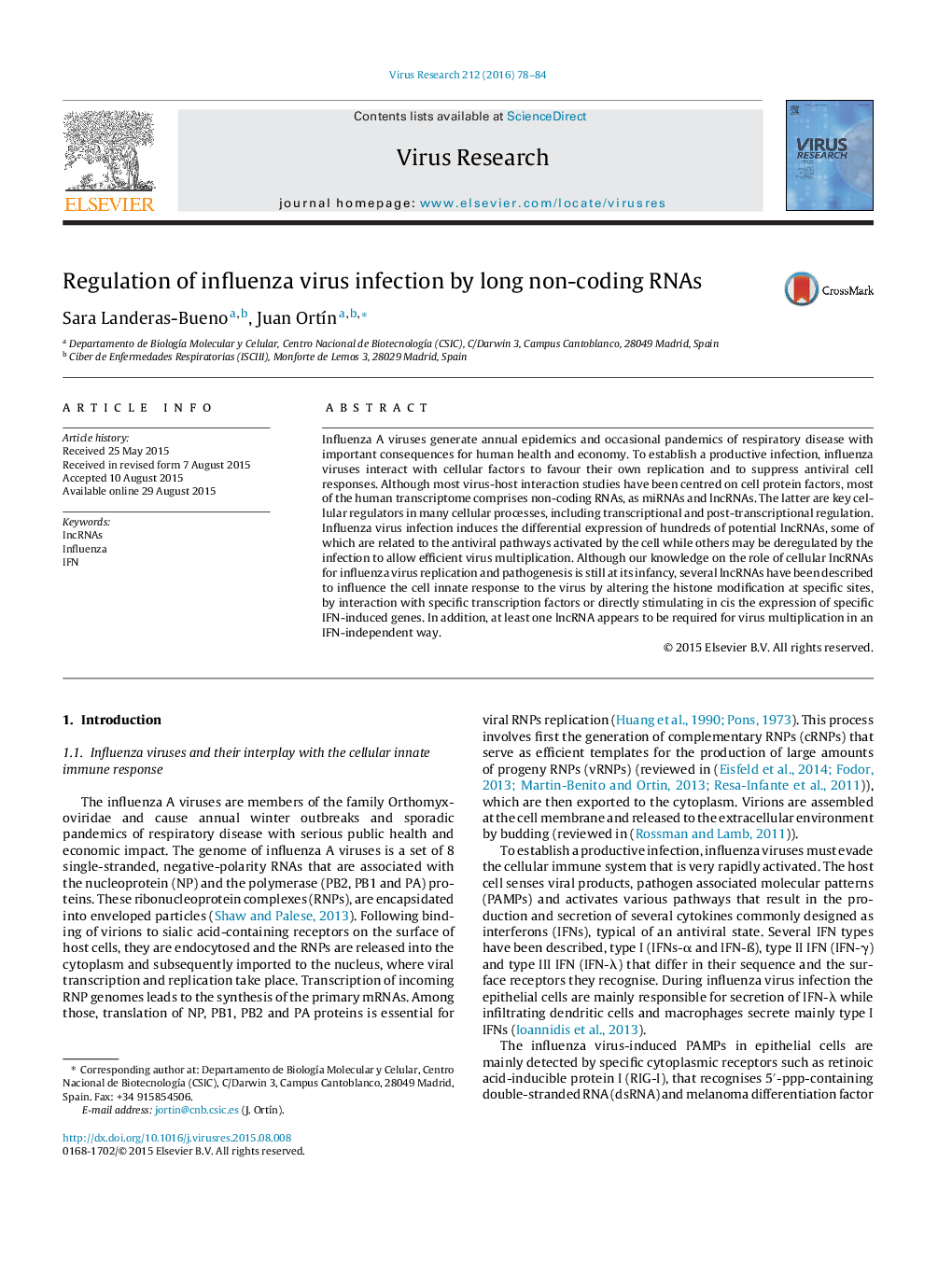| Article ID | Journal | Published Year | Pages | File Type |
|---|---|---|---|---|
| 3428097 | Virus Research | 2016 | 7 Pages |
•Influenza virus infection alters the expression of a large number of long non-coding RNAs.•Most long non-coding RNAs de-regulated by influenza virus infection modify the cellular innate immune response.•Much effort is still needed to understand the interplay between influenza virus and the cellular non-coding genes.
Influenza A viruses generate annual epidemics and occasional pandemics of respiratory disease with important consequences for human health and economy. To establish a productive infection, influenza viruses interact with cellular factors to favour their own replication and to suppress antiviral cell responses. Although most virus-host interaction studies have been centred on cell protein factors, most of the human transcriptome comprises non-coding RNAs, as miRNAs and lncRNAs. The latter are key cellular regulators in many cellular processes, including transcriptional and post-transcriptional regulation. Influenza virus infection induces the differential expression of hundreds of potential lncRNAs, some of which are related to the antiviral pathways activated by the cell while others may be deregulated by the infection to allow efficient virus multiplication. Although our knowledge on the role of cellular lncRNAs for influenza virus replication and pathogenesis is still at its infancy, several lncRNAs have been described to influence the cell innate response to the virus by altering the histone modification at specific sites, by interaction with specific transcription factors or directly stimulating in cis the expression of specific IFN-induced genes. In addition, at least one lncRNA appears to be required for virus multiplication in an IFN-independent way.
